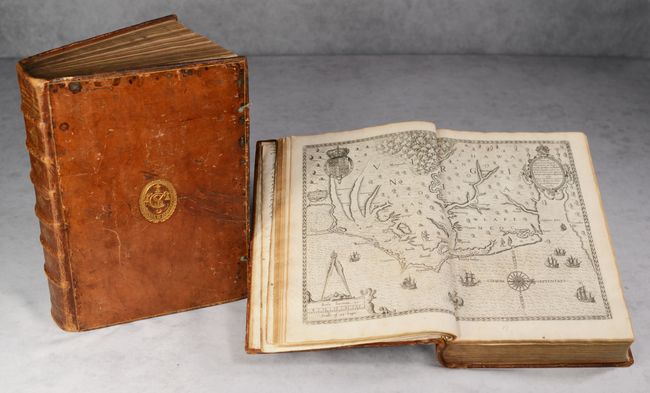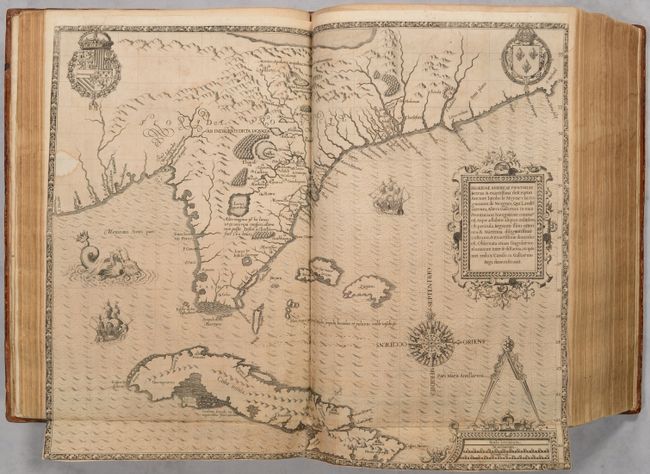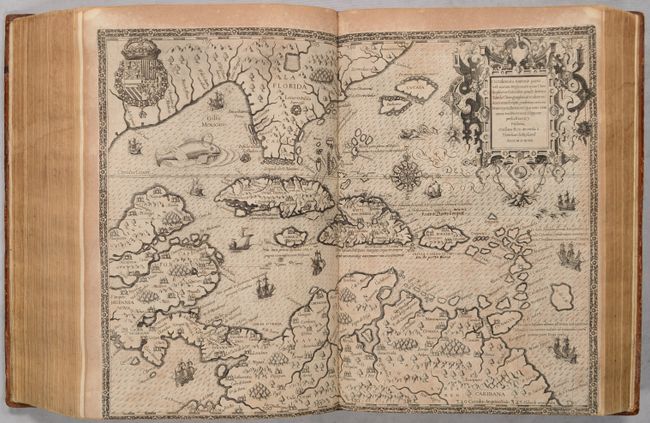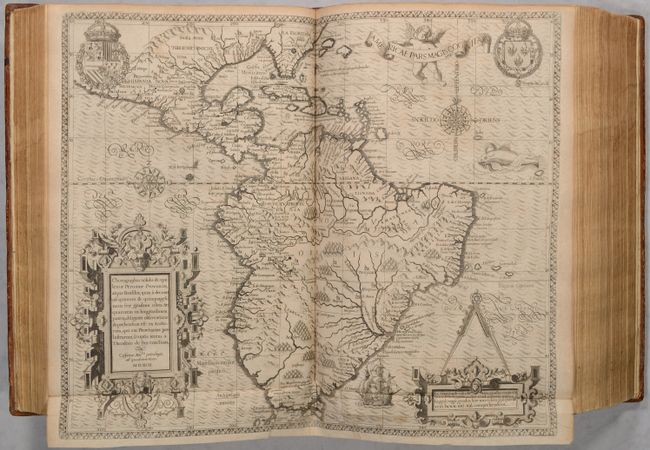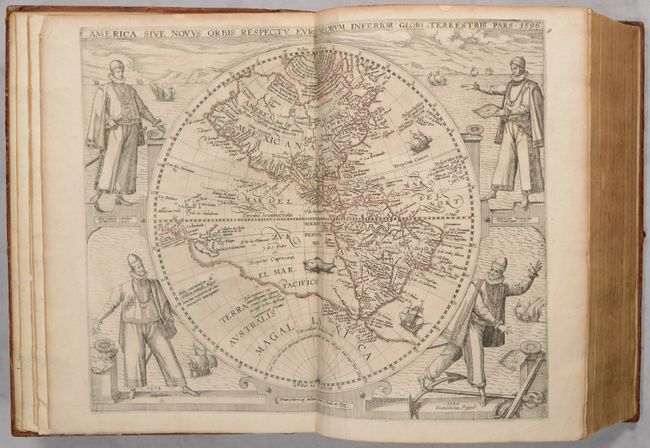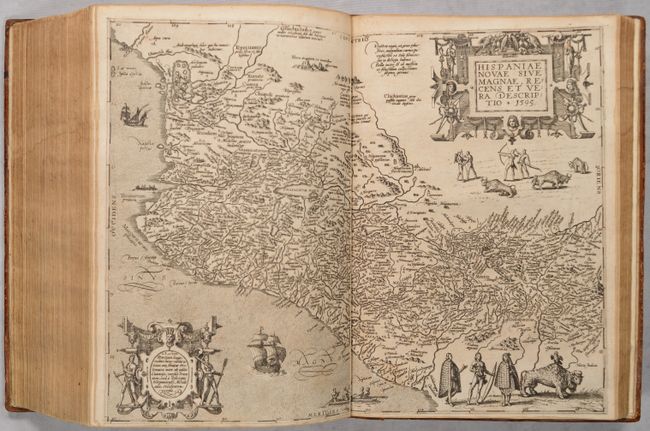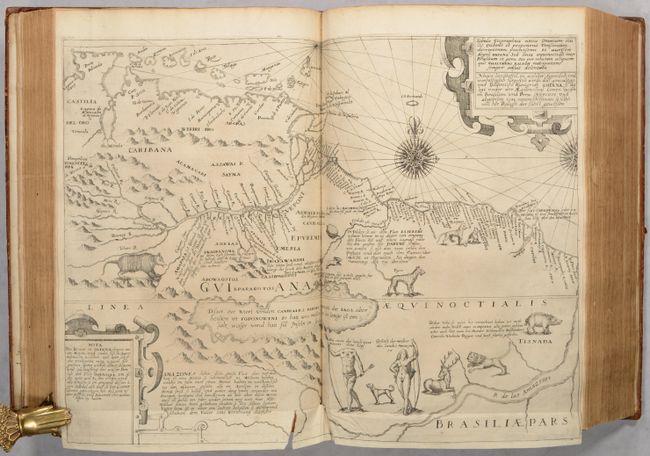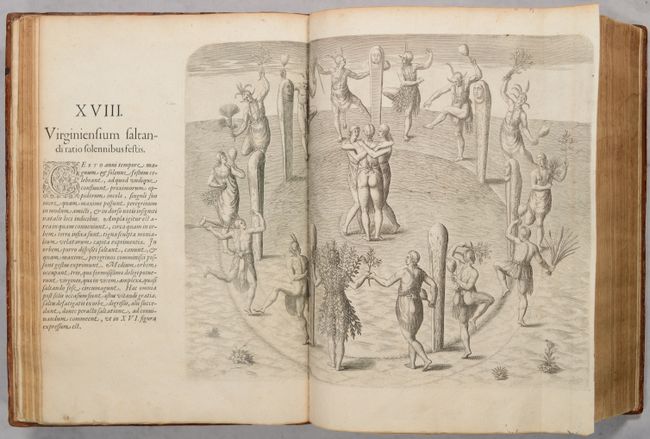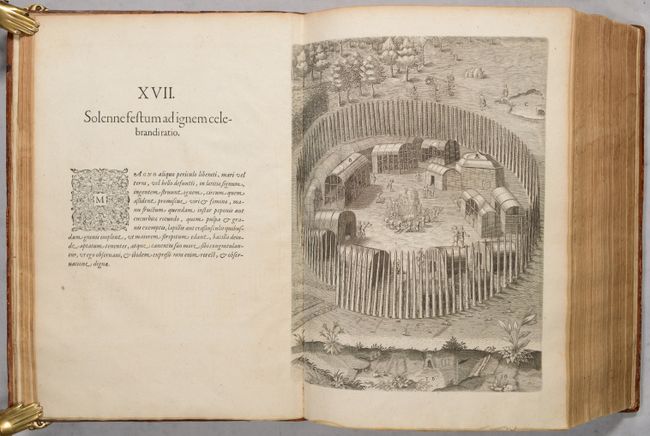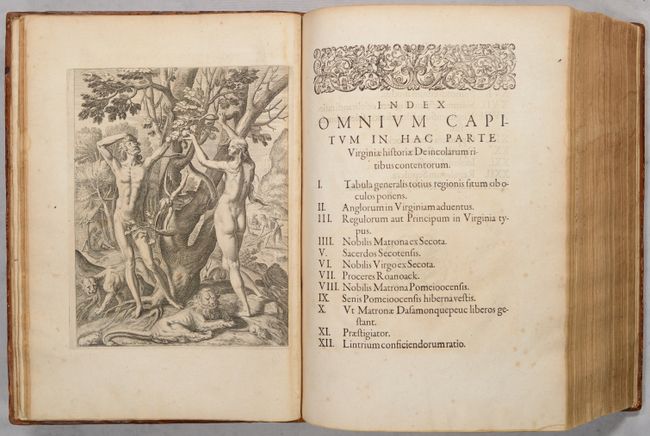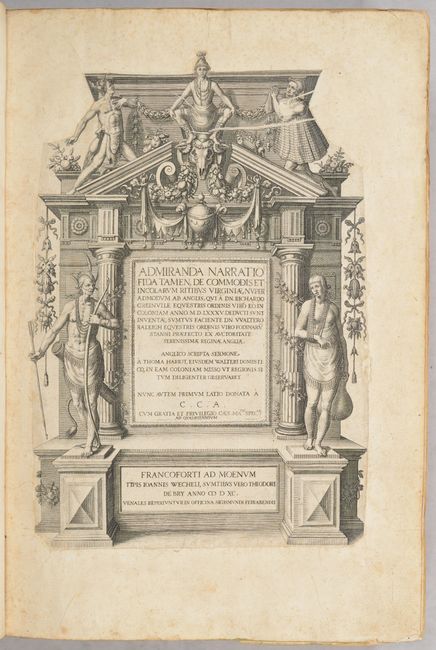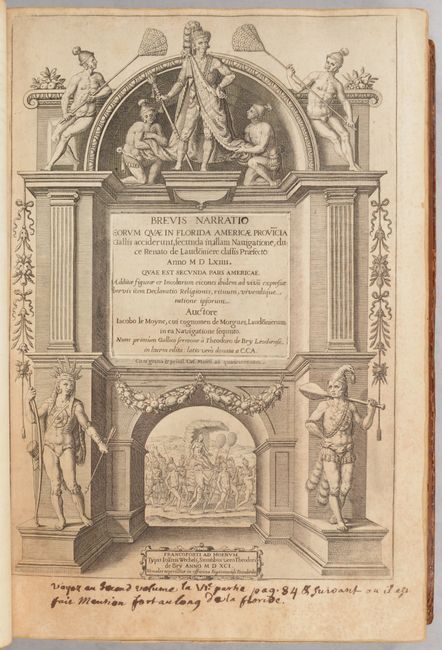Catalog Archive
Auction 200, Lot 5
Complete First Edition of De Bry's "Grands Voyages," Parts I-IX
"[Grands Voyages - 9 Parts in 2 Volumes]", Bry, Theodore de
Subject: Exploration & Surveys, Western Hemisphere
Period: 1590-1602 (published)
Publication:
Color: Black & White
Size:
10 x 14.3 inches
25.4 x 36.3 cm
Download High Resolution Image
(or just click on image to launch the Zoom viewer)
(or just click on image to launch the Zoom viewer)


